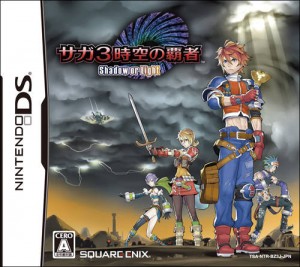 Yay! Finished! I ran roughshod over Laguna last night. I was half-asleep doing it, actually, because the fight was such a snoozefest. He only had three forms, and none of his attacks were ever enough to kill me. Not to mention I had a guest party member who would cure my life to full at the end of every turn and I made good use of him. Whenever the boss summoned extra troops, I had everyone use the ridiculously-overpowered Flare to wipe the field clean in one turn. The only challenge was staying awake long enough to kill him, seriously.
Yay! Finished! I ran roughshod over Laguna last night. I was half-asleep doing it, actually, because the fight was such a snoozefest. He only had three forms, and none of his attacks were ever enough to kill me. Not to mention I had a guest party member who would cure my life to full at the end of every turn and I made good use of him. Whenever the boss summoned extra troops, I had everyone use the ridiculously-overpowered Flare to wipe the field clean in one turn. The only challenge was staying awake long enough to kill him, seriously.
The ending was okay. Everyone’s alive, including your dad you’d never met. Well actually he wasn’t, but they somehow brought him back to life by turning him into a cyborg. Square-Enix, biology doesn’t work that way!!! As for that guest party member who I would have fought in the true ending to discover all kinds of truths, he disappears without a trace and presumably gets away with whatever evil scheme he was planning. And I never got to find out who Wanderer was or what he wanted either. Grr, I’m still mad.
Apart from the lack of difficulty and my loss of the true ending though, I had a great time with SaGa 3. It would take hours to write down everything that was so great about it, but I will at least put down the main points I appreciated, particularly in comparison to SaGa 2. In the interest of fairness I’ll eventually write another post about what wasn’t so great, but for now I’m just going to feel good about this. Those 33 hours of my life weren’t for nothing!
First things first, the characters were great. SaGa 2 had a main character and a bunch of no-personality self-created party members. This game has Dune, Shiryu, Polnareff and Milfy, each with their little quirks and character traits. Dune is just Dune, a little dense, a little silly, a little stubborn sometimes, but generally a cheerful, likable guy. As far as RPG protagonists go, he’s exactly my type. Shiryu is his girlfriend/childhood friend. Sweet, strong romantic streak, always wants to help other people, awful cook, not annoying at all. I like her.
And I like how she’s in a romantic relationship with Dune but the issue is rarely referred to and is never allowed to take over the game. They didn’t even have the obligatory “Your girlfriend is in trouble, throw everything away to save her!” scene (Nemesis and Dior did, but they’re idiots and don’t count). Polnareff is your brash, cocky violent friend who acts first and thinks later. I love Polnareff. And Milfy, dear Milfy. Rough, cranky, take-no-prisoners girl who teases and argues with Shiryu non-stop. Where Shiryu is the nurturing, mothering type, Milfy is the type to give you a swift kick in the pants when you start moping too much. They make a great combo.
I loved my party. I wish they’d have even more interaction, just so I could get to see them bicker more. They gave off a genuine “childhood friends” feel by not going too far in one direction or another. By that I mean they didn’t argue all the time, but at the same time they didn’t slavishly agree with everything Dune said either. He may have been the main character, but he was more like a primus inter pares than like the typical Messianic hero you tend to get in jRPGs. There was nothing special about him at all, and his friends certainly didn’t treat him that way. Awesome.
Most of my 33 hours were spent playing and fighting, not interacting, so it’s just as well that the gameplay was fun too. They kept introducing new features and new gameplay elements right until very late in the game. You start with a normal battle system, then you get a Time Gear that lets you stock points in battle. This unlocks the Past, Present and Future battle drive options in battle. You also get different upgrades to your ship that let you, for example, dig up buried treasure, or see all the treasures on the map, or see where all the enemies are (very useful), you get the ability to “scout” enemies and add them to your ship’s laser, etc. There was always some new feature cropping up, which kept the gameplay fresh. SaGa 2 was like this as well, but I appreciated it more in SaGa 3, probably because my mind wasn’t consumed with trying to stay alive.
The real-time level up system was cool as well. In SaGa 2, and presumably in SaGa 1, your stats leveled up randomly at the end of a battle. In SaGa 3 it happens right as you’re fighting. Which stats level up and the probability of leveling up depends on your class (human, esper, beast, monster), the weapon you’re using and the difficulty of the battle. You’re way more likely to level up against a boss than against some random weakling, and it happens on the spot. You hit the boss with your sword at 45 strength and *ping* now you have 46 strength. In longer boss battles you can level each stat three or four times and take advantage of them right away! No more of that “Gee, this extra HP would’ve been really helpful if you’d given it to me before the battle” nonsense. This is the way!
It’s possible that I was just used to the way SaGa games work now, but this time I found it much, much easier to level up my stats. The game seemed way more generous with the level ups and I didn’t have to grind each weapon to death just to get a few bonuses. Armor and protective equipment was more powerful as well, sparing me the pain of wasting turns using shields in order to level up my defence. DF was around the 85 point at the end without me ever gaining a single point in it. HP also grew much faster, even for Espers. My Esper Polnareff had 974 HP going into the final boss battle, which is really high for Espers. Plus unlike SaGa 2, your HP isn’t capped around 1024, so my beast Dune and beast Shiryu had around 1540 HP (they made a sweet furry couple at the end) while my human Milfy had about 1225 HP. All this made the game far easier and far less frustrating.
Also I liked the way the enemies went easier on me this time. Maybe it’s my imagination, but it was much easier to run away from them. Perhaps it’s because the map controls were easier to navigate, or I’d just gotten used to the 3D environment. Later on in the game I got the ability to freeze time. I could stop enemies in their tracks and then “scout” them, or avoid them, or even whip around and attack them from behind! Speaking of which, I almost never got back-attacked even when I deserved it, as opposed to SaGa 2 where every other attack was a back attack.
The number of attacking enemies was also far more reasonable, at most six or seven on the field at once. In fact, that many was rare, it was usually four or five. Even in chain attacks, only one enemy team would show up at a time. The rest would wait patiently in a stack for their turn. How considerate. Especially since I still get horrible flashbacks about being attacked by over thirty enemies (30!!) at once in SaGa 2. Thirty enemies in front, around and behind my team! And their speed was so much faster that they’d all go first before I could get a hit in, it was murder! I’m so happy my speed growths were better this time (beast + physical skill = crazy speed lvl up) and the enemies were much fewer so the playing field was a lot more level.
Let’s see, what else. Oh, I liked the optional overworld. You can choose to explore the overworld map, or you can skip it entirely and go straight to your destination. Not always, but in many cases, just by following the Yellow Dotted Line. It’s like there’s an over-overworld and a regular overworld, depending on how fast you want to get somewhere and how many battles you want to face. It’s not like Radiant Historia where you have to pass through the same Lazvil Hills and the same Granorg Plain every time you want to go somewhere, or SaGa 2 where just stepping out of your village is asking for trouble. I still chose to explore every place at least once so I could pick up chests and dig up treasure. The point is, most of the time it’s optional.
Oh, you know how you can eat meat in the SaGa games to turn into a monster? Your characters stay transformed even in town. Even during cutscenes and storyline events, they’re still monsters and nobody on the planet has a problem with it. They can even tell at first glance that the ghost floating over there is Dune, even if he looks like every other monster in the game. I just found that funny.
While I’m on the topic, I liked being able to change my party members’ classes. A human could become an esper by eating meat/a gear of the opposite element, and vice versa. And any of them could shift from robot->cyborg->human/esper->beast->monster just by eating meat (moves you to the right of the scale) or a gear (moves you towards the left) that an enemy dropped. This helped tremendously in growths, which is probably why my characters ended up so terrifically strong by the end. And again, it helped keep the game and the battles fresh.
Let’s see, what else did I like… Flying around on my awesome ship was cool. Being able to skip battle animations to make battles go faster was cool. The music was decent. I liked the “action” theme they played every time something dramatic happened. And there were no soppy events, so there was no silly soppy music, it was all upbeat and inspiring. Good job!
Now then, so much for SaGa 3. Next up I’ve almost finished the terrible Nanatsuiro Drops DS game, which doesn’t really deserve a writeup. I also started Remindelight, another horrible game, which I’m not going to continue. Tactical Guild has filled my bad game quota for the year. I also tried to start Arabians Lost, but I’m about three hours in and they haven’t stopped talking so my desire is wilting by the second. Luckily, just today I downloaded the free demo of Territoire, from EasyGameStation, the makers of Recettear, so I think that’s going to be my next game. So many games, so little time…
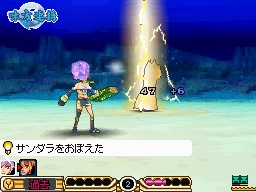
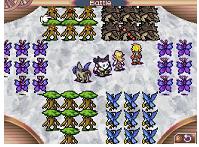
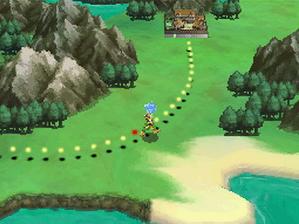
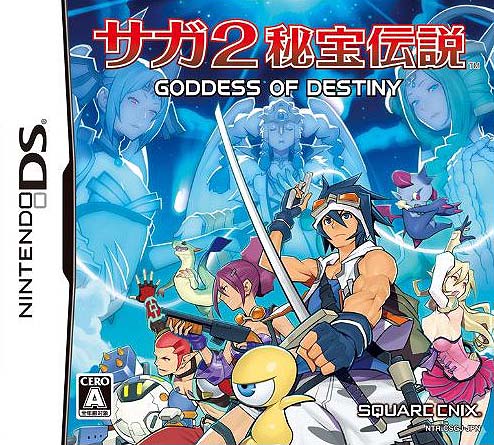
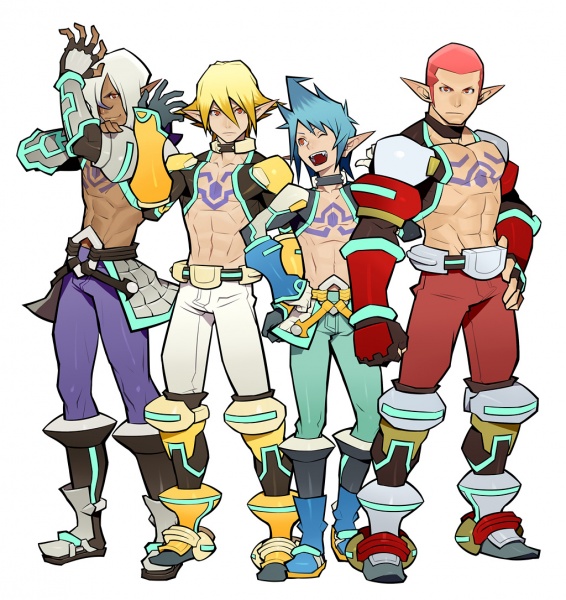
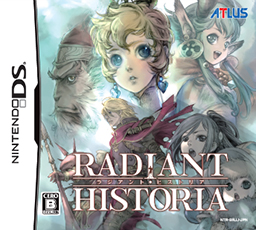
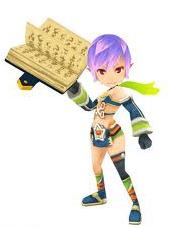
[…] Echoes of Time and give up the second playthrough of Tactical Guild and possibly pause playing Saga 3 in order to focus on this. It shouldn’t take […]